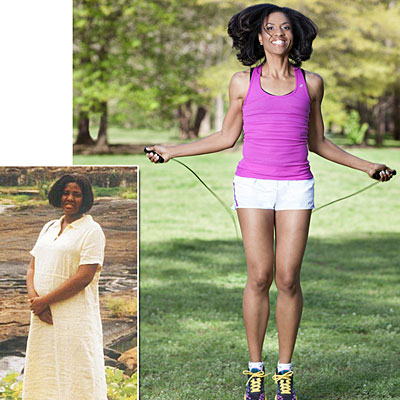The My Alli Weight Loss Plan
The My Alli Weight Loss Plan was created by nationally recognized nutrition and weight management experts who understand the challenges of losing weight. Read more about one of those experts who has joined the alli team, Dr. Gary Foster.
Gary Foster, Ph.D. is a renowned leader in the field of weight management and behavior change. Dr. Foster is a Professor of Medicine and Public Health and Director of the Center for Obesity Research and Education at Temple University in Philadelphia. He has previously served as Clinical Director of the Weight and Eating Disorders Program, Department of Psychiatry, at the University of Pennsylvania School of Medicine. Dr. Foster is a frequent presenter at national and international meetings and has treated overweight patients in individual and group settings for over 20 years.
Begin with meal planning
Life is tempting. Fast-food advertising encourages you to grab and go ?often at a good price that could cost you in the long run. If you know what to expect from the outside influences, you can avoid the setbacks that lead to weight gain. In this section, you'll find resources including meal planning, articles, and information that can help you:
fight cravings
survive slip-ups
control portion size
You can also discover which popular low-fat diets work with the alli?program. Just view alli-friendly diets. Some diets are not a good fit with alli, because they allow high-fat foods that can cause treatment effects while using alli capsules. With alli, you need to stick with a reduced-calorie, low-fat diet. Find out more about the debate on low-fat choices.
How many daily fat grams and calories are right for you? Check out the target fat & calories charts.
Four ways to fight cravings
Has this happened to you? You see a chocolate bar in a magazine, so you take a walk to the nearest vending machine. Or you're in a movie theater, and the smell of popcorn drives you to the concession stand. These triggers are hard to handle. What can you do?
Get moving. Physical activity can boost your mood just like food can ?and it uses up calories, rather than adds them
Swap foods. If you crave a salty snack, have some salted celery or a lettuce salad with lemon juice and a sprinkling of salt. If you want something sweet, try sugar-free hard candy or a fruit-and-ice smoothie with no-calorie sweetener
Distract yourself. If you can do something else for just a few minutes, the craving may pass
Drink water. Sometimes thirst disguises itself as hunger. But make sure you're not substituting water for food; you still need nutrients as part of a healthy diet
Survive the occasional slip-ups
Weight control is not like walking a tightrope ?one misstep and you're done. If you slip, don't fall overboard with bad choices. Here are a few tips for recovering:
Accept that mistakes happen. Forgive yourself and focus on what to do differently next time
Persevere with your goals. Avoid "all-or-nothing" thoughts of giving up
Identify triggers. Try to understand what events or circumstances led to overeating. Anger, stress, loneliness, or the blues are common. Be ready for them
Turn your back. When you sense a trigger, change direction. If you're in the kitchen, or near food, go somewhere else. Just walk away
Do the math. If you want to be sure you have a low-fat diet, count the grams of fat in your daily food choices and compare them to the number of grams of fat suggested for your calorie level. For more on daily fat and calorie targets, check out the target fat and calories charts
Watch portion size
One of the easiest weight loss strategies is to control portion size. Get to know the amount of food you eat. Often, we get in the habit of eating a certain amount of food to feel satisfied. And if we're served more food, we'll eat more.
Studies have shown that the more food people were given to eat, the more they ate, regardless of their feeling of satiety.
If the full plate is important to you, try using a smaller plate. Or keep portion sizes the same, but cut calories by lowering the fat in your dishes and adding more low-calorie ingredients like crunchy vegetables and leafy salads. Pay attention to the "energy density" in foods.
All foods have a specific number of calories within a given amount (volume). Foods such as desserts, candies, and processed foods are high in energy density. A small volume of these foods has a large number of calories. But some foods such as fruits and vegetables have low energy density. So you can have a larger portion size with a fewer number of calories ?and that can fill you up without the downside of calorie overload.
10 quick tips for portion control
Leave a portion of what you're served on your plate. Ask for a "to go" container so you can have the leftovers for another meal.
Don't be fooled into thinking if you skip the bread, you're free to have a larger portion of steak.
Cut back wherever you can. Ask for salad dressing on the side, and use one fewer tablespoon of dressing whenever you have salad.
Make gradual changes in portion size for lasting results.
If you want larger portions, add more fruits, vegetables, and beans into your meals.
A deck of cards is about the size of 3 ounces of cooked meat. A baseball is about the size of one cup. Use these visual cues when looking at portions.
Don't let deprivation lead to a splurge. If you have a smaller entr閑 portion, fill up the rest of your plate with vegetables and a green salad.
Measure foods at home so when you eat out, you'll know how much pasta or rice you may be eating in a restaurant.
Read food labels to get familiar with the calories and nutrients you're getting in each serving.
Value meals may be good for the wallet but bad for the waist. You may be better off choosing individual items in smaller portion sizes.
Gary Foster, Ph.D. is a renowned leader in the field of weight management and behavior change. Dr. Foster is a Professor of Medicine and Public Health and Director of the Center for Obesity Research and Education at Temple University in Philadelphia. He has previously served as Clinical Director of the Weight and Eating Disorders Program, Department of Psychiatry, at the University of Pennsylvania School of Medicine. Dr. Foster is a frequent presenter at national and international meetings and has treated overweight patients in individual and group settings for over 20 years.
Begin with meal planning
Life is tempting. Fast-food advertising encourages you to grab and go ?often at a good price that could cost you in the long run. If you know what to expect from the outside influences, you can avoid the setbacks that lead to weight gain. In this section, you'll find resources including meal planning, articles, and information that can help you:
fight cravings
survive slip-ups
control portion size
You can also discover which popular low-fat diets work with the alli?program. Just view alli-friendly diets. Some diets are not a good fit with alli, because they allow high-fat foods that can cause treatment effects while using alli capsules. With alli, you need to stick with a reduced-calorie, low-fat diet. Find out more about the debate on low-fat choices.
How many daily fat grams and calories are right for you? Check out the target fat & calories charts.
Four ways to fight cravings
Has this happened to you? You see a chocolate bar in a magazine, so you take a walk to the nearest vending machine. Or you're in a movie theater, and the smell of popcorn drives you to the concession stand. These triggers are hard to handle. What can you do?
Get moving. Physical activity can boost your mood just like food can ?and it uses up calories, rather than adds them
Swap foods. If you crave a salty snack, have some salted celery or a lettuce salad with lemon juice and a sprinkling of salt. If you want something sweet, try sugar-free hard candy or a fruit-and-ice smoothie with no-calorie sweetener
Distract yourself. If you can do something else for just a few minutes, the craving may pass
Drink water. Sometimes thirst disguises itself as hunger. But make sure you're not substituting water for food; you still need nutrients as part of a healthy diet
Survive the occasional slip-ups
Weight control is not like walking a tightrope ?one misstep and you're done. If you slip, don't fall overboard with bad choices. Here are a few tips for recovering:
Accept that mistakes happen. Forgive yourself and focus on what to do differently next time
Persevere with your goals. Avoid "all-or-nothing" thoughts of giving up
Identify triggers. Try to understand what events or circumstances led to overeating. Anger, stress, loneliness, or the blues are common. Be ready for them
Turn your back. When you sense a trigger, change direction. If you're in the kitchen, or near food, go somewhere else. Just walk away
Do the math. If you want to be sure you have a low-fat diet, count the grams of fat in your daily food choices and compare them to the number of grams of fat suggested for your calorie level. For more on daily fat and calorie targets, check out the target fat and calories charts
Watch portion size
One of the easiest weight loss strategies is to control portion size. Get to know the amount of food you eat. Often, we get in the habit of eating a certain amount of food to feel satisfied. And if we're served more food, we'll eat more.
Studies have shown that the more food people were given to eat, the more they ate, regardless of their feeling of satiety.
If the full plate is important to you, try using a smaller plate. Or keep portion sizes the same, but cut calories by lowering the fat in your dishes and adding more low-calorie ingredients like crunchy vegetables and leafy salads. Pay attention to the "energy density" in foods.
All foods have a specific number of calories within a given amount (volume). Foods such as desserts, candies, and processed foods are high in energy density. A small volume of these foods has a large number of calories. But some foods such as fruits and vegetables have low energy density. So you can have a larger portion size with a fewer number of calories ?and that can fill you up without the downside of calorie overload.
10 quick tips for portion control
Leave a portion of what you're served on your plate. Ask for a "to go" container so you can have the leftovers for another meal.
Don't be fooled into thinking if you skip the bread, you're free to have a larger portion of steak.
Cut back wherever you can. Ask for salad dressing on the side, and use one fewer tablespoon of dressing whenever you have salad.
Make gradual changes in portion size for lasting results.
If you want larger portions, add more fruits, vegetables, and beans into your meals.
A deck of cards is about the size of 3 ounces of cooked meat. A baseball is about the size of one cup. Use these visual cues when looking at portions.
Don't let deprivation lead to a splurge. If you have a smaller entr閑 portion, fill up the rest of your plate with vegetables and a green salad.
Measure foods at home so when you eat out, you'll know how much pasta or rice you may be eating in a restaurant.
Read food labels to get familiar with the calories and nutrients you're getting in each serving.
Value meals may be good for the wallet but bad for the waist. You may be better off choosing individual items in smaller portion sizes.
Related Articles
-
How to Start Weight Training (for Women)
As obesity levels rise higher and higher around the world, there is on
-
The Sugar Glycemic Index and Other Healthy Alternatives
Admit it or not, we find it hard to live without sugar or any sweetene
-
I Want To Lose Weight, Will Herbal Slimming Pills Work?
I want to reduce body weight, will herbal slimming pills work? This i
-
What Can I Eat On A Diet - 4 Top Foods
The really good news is that there is a huge ar
-
25 Genius Ways Fitness Trainers Stay Motivated to Exercise
-
HCG Diet Tops in Diet Comparison
When you are thinking about how to lose weight, one of the best thi
- DON'T MISS
- How To Lose Weight And Increase Your Energy Naturally
- Exercises to Burn Arm Fat and Get Rid of Arm Flab
- Homeopathy - how does it perform?
- Does Athlean X Work
- Cleanse Your Body for a Healthy Living
- How To Tone Up Your Stomach
- How to Maintain Proper Weight for Lifetime?
- Getting the Right Exercise for Fat Loss
- Ever Wonder Why 98% of Fat Loss Diet Plans Fail?
- Hypnosis Weight Loss: Some Ways to Stop the Weighting




